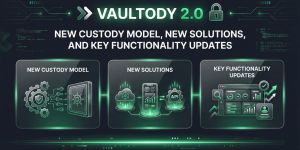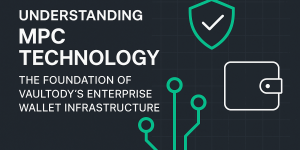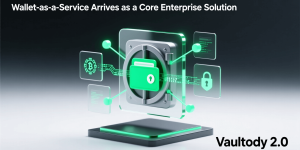Reviving Bitcoin’s Roots: How a Modern Faucet Aims to Drive Crypto Adoption in 2025

Reintroducing the Bitcoin Faucet for the Next Generation of Users
Bitcoin has evolved from an obscure digital experiment into a trillion-dollar financial ecosystem. Yet despite its meteoric rise, onboarding new users remains one of the greatest challenges for mass adoption. In 2025, crypto pioneer Charlie Shrem is attempting to solve this problem the same way Bitcoin’s earliest adopters did—through a Bitcoin faucet.
This initiative seeks to revive a once-popular gateway into the world of digital currencies. By giving away small amounts of Bitcoin to users who complete simple tasks like solving CAPTCHAs, this faucet reintroduces a proven method to spark interest, teach users wallet basics, and encourage real blockchain interaction.
Let’s explore what this project means, why faucets matter more than ever, and how this simple concept might shape Bitcoin’s future yet again.
What Is a Bitcoin Faucet?
A Bitcoin faucet is a website or application that rewards users with tiny amounts of Bitcoin - measured in satoshis, the smallest unit of BTC - for performing basic tasks. These might include solving a CAPTCHA, clicking a button, or completing a short educational quiz.
In the early 2010s, faucets were instrumental in expanding the Bitcoin user base. They helped demystify blockchain technology by incentivizing users to set up wallets, send transactions, and explore the Bitcoin ecosystem in a hands-on way.
Back then, a faucet might pay out whole Bitcoins because the asset had negligible monetary value. Today, such generosity isn’t financially viable, but the faucet model still holds strong educational and adoption value.
Why Reintroduce a Faucet in 2025?
The Bitcoin ecosystem in 2025 is mature. There are institutional investors, spot ETFs, central bank commentary, and mainstream media coverage. But one thing hasn’t changed: onboarding non-technical users remains difficult.
Faucets bridge the gap between curiosity and action. They offer users a no-risk opportunity to experience what Bitcoin feels like: receiving, storing, and using it - even in small amounts. This tactile experience builds confidence, lowers perceived barriers, and ignites interest.
Reintroducing a faucet in this climate signals a return to grassroots strategies. It reminds the industry that even the most advanced financial system benefits from simple, user-first tools.
Charlie Shrem’s Vision: Simple, Educational, Accessible
At the core of this modern Bitcoin faucet revival is the idea of accessibility. The new faucet is designed to be clean and easy to use. It offers instructions on how to set up a Bitcoin wallet and requires nothing more than completing a CAPTCHA to request a reward.
There are no paywalls, email signups, or complicated requirements — just an invitation to join the Bitcoin network.
Shrem, a well-known figure from the early days of Bitcoin, has long advocated for practical, community-driven adoption tools. His new project aims to capture the original ethos of Bitcoin: openness, experimentation, and education.
While rewards today are modest - fractions of a cent - the value lies in the experience itself. For a new user, claiming satoshis and watching them arrive in a personal wallet is powerful. It transforms abstract concepts into real engagement.
The Role of Modern Development: Vibe Coding and AI Tools
What sets this new faucet apart is how it’s being built. Instead of a traditional software team, Shrem is using a method dubbed “vibe coding,” a collaborative workflow where developers use AI prompts and tools to create functional, evolving projects with minimal overhead.
This approach speeds up development, lowers technical barriers, and allows for rapid iteration. It also represents a broader trend in tech: AI-assisted development for lightweight, mission-focused applications.
By using vibe coding, the faucet can remain agile. Updates, interface changes, and bug fixes can be rolled out quickly. More importantly, the faucet can scale without requiring a large team — staying true to the decentralized spirit of Bitcoin itself.
How Faucets Can Still Drive Adoption
Some might argue that faucets are outdated in an era of DeFi, NFTs, and Layer 2 scaling solutions. But that overlooks their core strength: experiential learning.
Here’s why faucets still matter in 2025:
1. Wallet Creation
Faucets encourage users to download non-custodial wallets and learn how to store private keys, a foundational step in crypto self-sovereignty.
2. Hands-On Experience
Receiving even 100 satoshis feels real. It creates a psychological connection that reading or watching videos cannot replicate.
3. Low-Risk Entry
New users often hesitate to buy Bitcoin due to volatility, fees, or technical fear. Faucets eliminate all three by offering free, no-strings-attached sats.
4. Community Building
Faucets often form part of educational campaigns or community challenges that bring users together and increase platform stickiness.
Security and Best Practices for Users
If you’re planning to use a Bitcoin faucet, consider the following best practices:
- Use a Fresh Wallet Address: For privacy and security, avoid reusing old wallet addresses when claiming rewards.
- Verify the Site URL: Always ensure you’re using the official faucet to prevent phishing scams.
- Understand the Reward Size: Don’t expect significant earnings — this is about learning and participation, not income.
- Stay Curious: Use the faucet as a starting point to explore more tools like multi-signature wallets, Lightning wallets, and blockchain explorers.
Final Thoughts: One Satoshi at a Time
In many ways, the faucet revival is symbolic. It reminds the crypto industry that growth doesn’t always come from billion-dollar products. Sometimes, it comes from simple tools that give people a reason to explore something new.
By combining nostalgia with modern accessibility, this faucet initiative serves as a call to action: let’s make Bitcoin more approachable again.
If the faucet inspires even a few thousand users to install their first wallet, secure their first private key, or ask their first questions about decentralization, it will have done its job. And in that sense, it's more than a product - it's a mission.




 Login
Login







 Copy link
Copy link